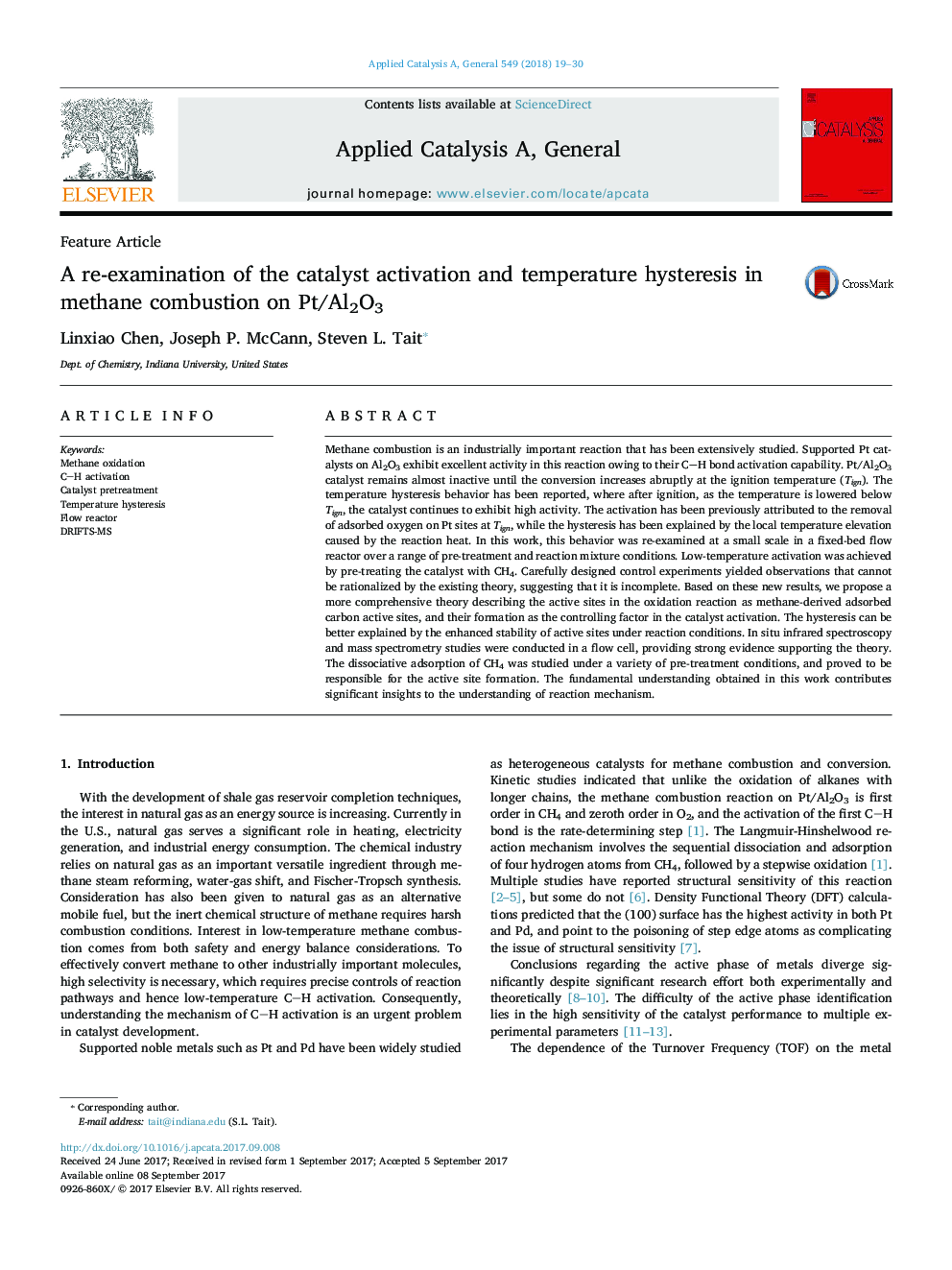| کد مقاله | کد نشریه | سال انتشار | مقاله انگلیسی | نسخه تمام متن |
|---|---|---|---|---|
| 6453190 | 1418497 | 2018 | 12 صفحه PDF | دانلود رایگان |

- Flow reactor and DRIFTS study of methane oxidation on Pt/Al2O3 catalyst.
- Pre-treatment enables low-temperature methane oxidation activation.
- Active sites formed during pretreatment by methane-derived carbon adsorbates.
- Temperature hysteresis linked to stability of active sites.
Methane combustion is an industrially important reaction that has been extensively studied. Supported Pt catalysts on Al2O3 exhibit excellent activity in this reaction owing to their CH bond activation capability. Pt/Al2O3 catalyst remains almost inactive until the conversion increases abruptly at the ignition temperature (Tign). The temperature hysteresis behavior has been reported, where after ignition, as the temperature is lowered below Tign, the catalyst continues to exhibit high activity. The activation has been previously attributed to the removal of adsorbed oxygen on Pt sites at Tign, while the hysteresis has been explained by the local temperature elevation caused by the reaction heat. In this work, this behavior was re-examined at a small scale in a fixed-bed flow reactor over a range of pre-treatment and reaction mixture conditions. Low-temperature activation was achieved by pre-treating the catalyst with CH4. Carefully designed control experiments yielded observations that cannot be rationalized by the existing theory, suggesting that it is incomplete. Based on these new results, we propose a more comprehensive theory describing the active sites in the oxidation reaction as methane-derived adsorbed carbon active sites, and their formation as the controlling factor in the catalyst activation. The hysteresis can be better explained by the enhanced stability of active sites under reaction conditions. In situ infrared spectroscopy and mass spectrometry studies were conducted in a flow cell, providing strong evidence supporting the theory. The dissociative adsorption of CH4 was studied under a variety of pre-treatment conditions, and proved to be responsible for the active site formation. The fundamental understanding obtained in this work contributes significant insights to the understanding of reaction mechanism.
175
Journal: Applied Catalysis A: General - Volume 549, 5 January 2018, Pages 19-30